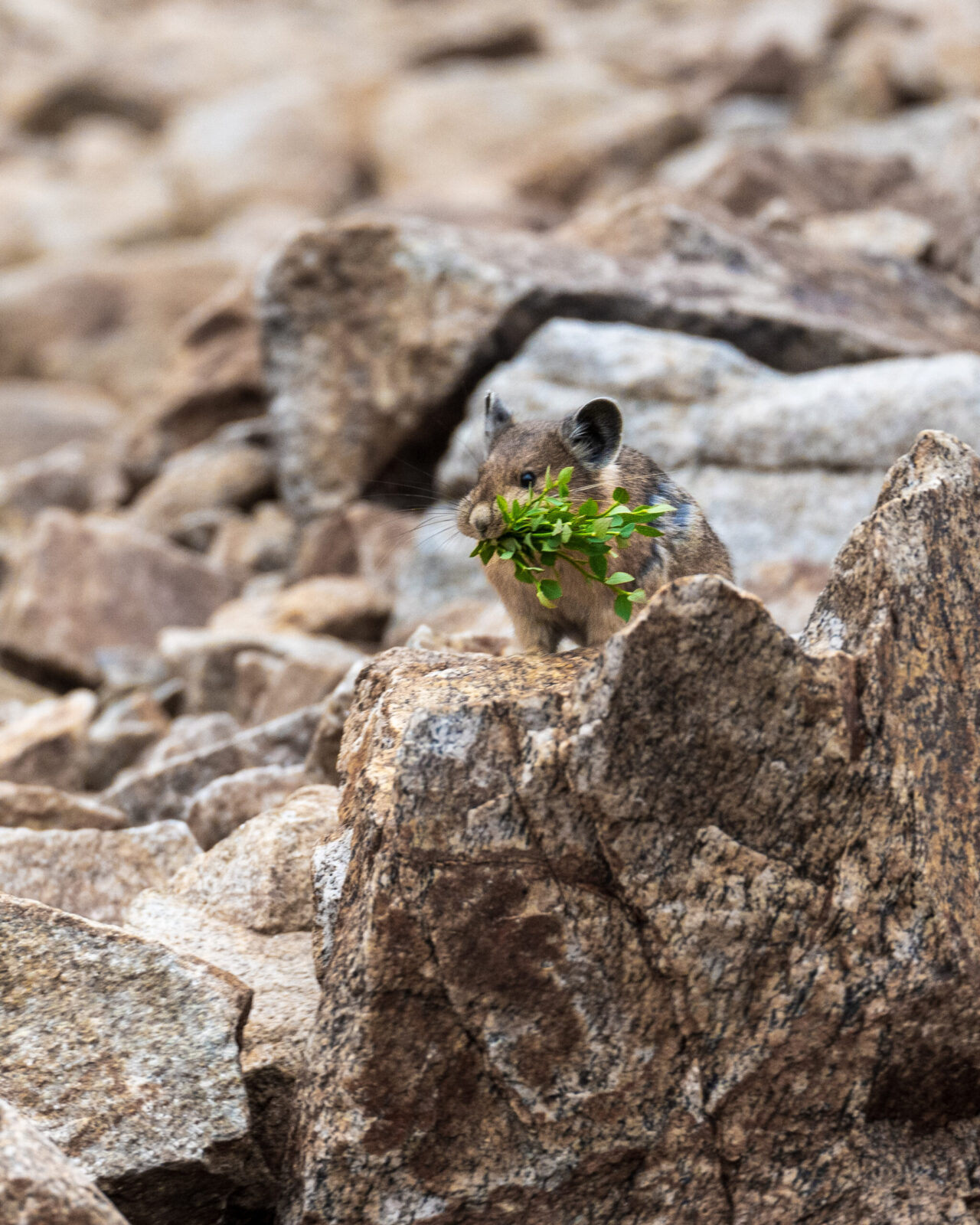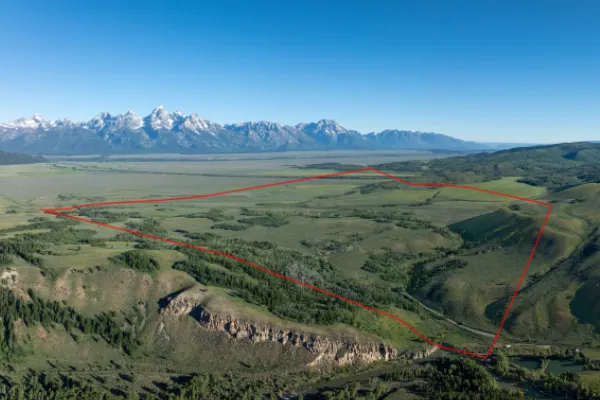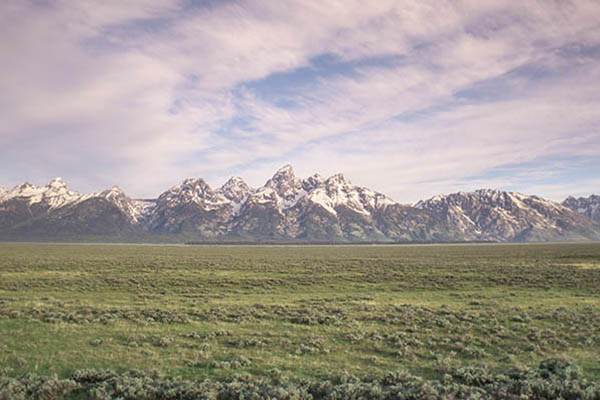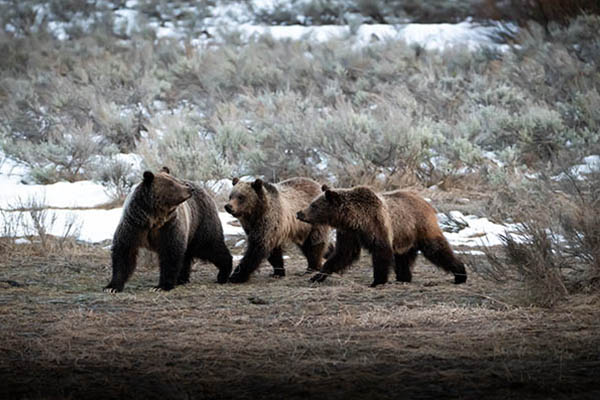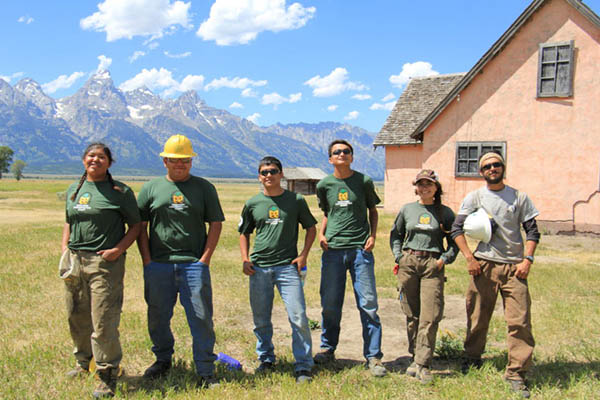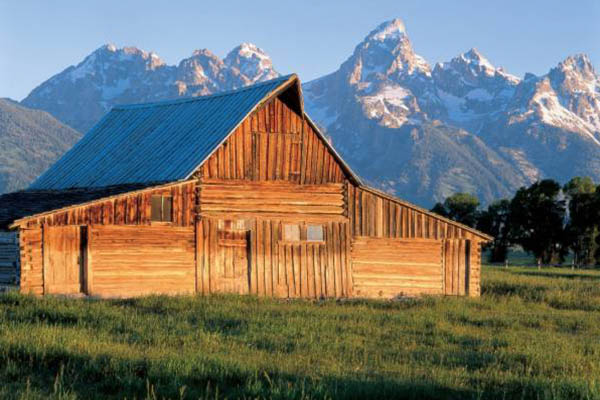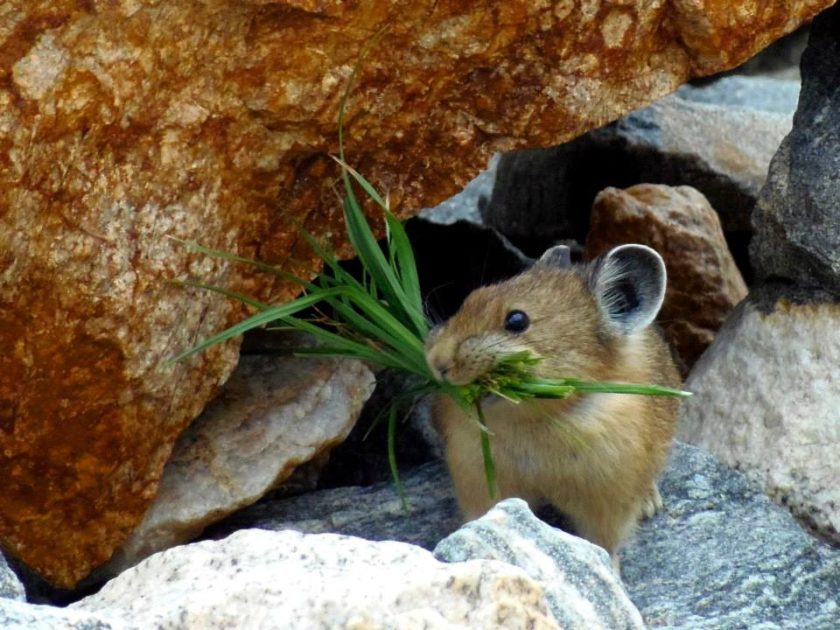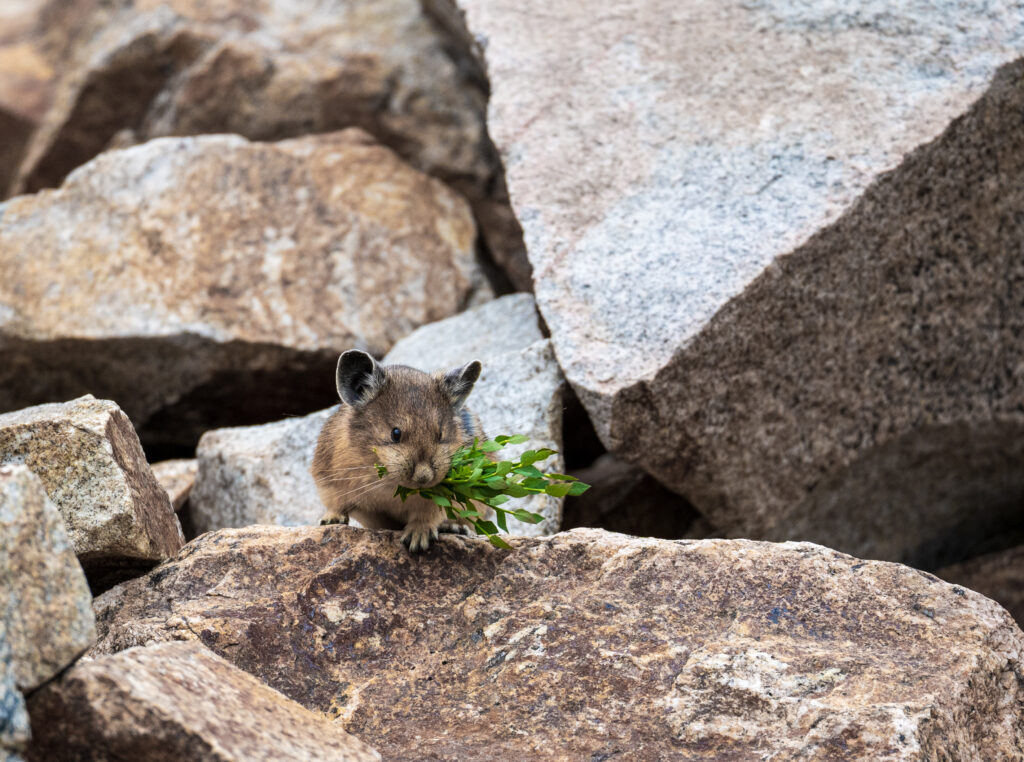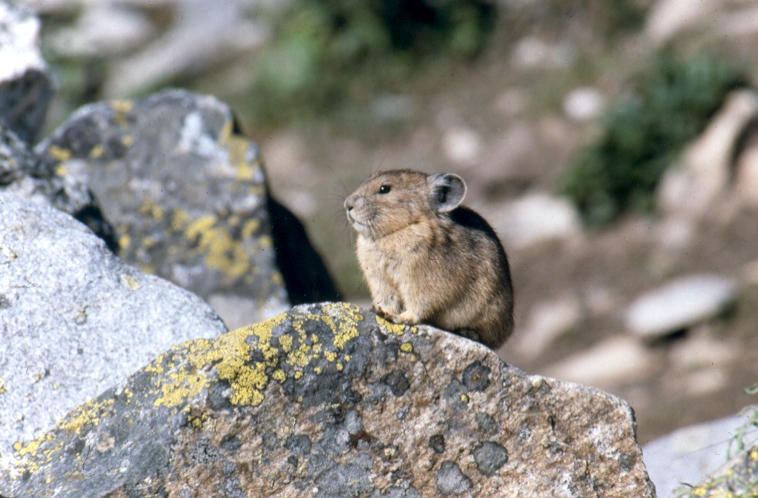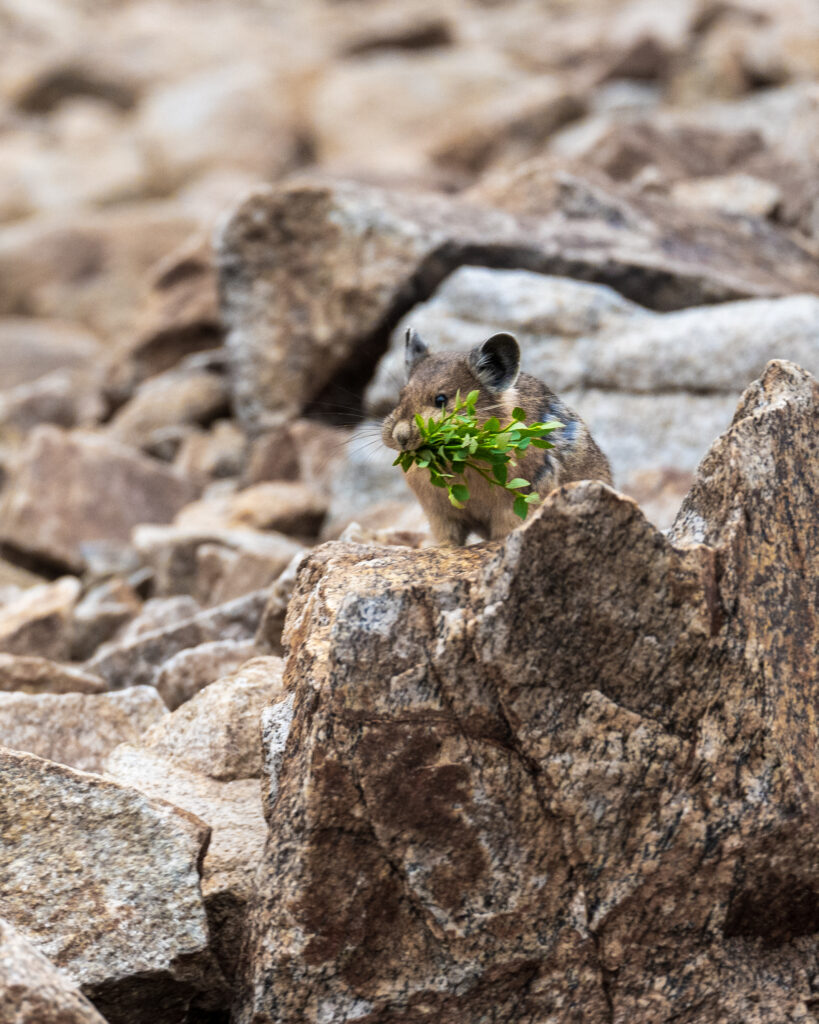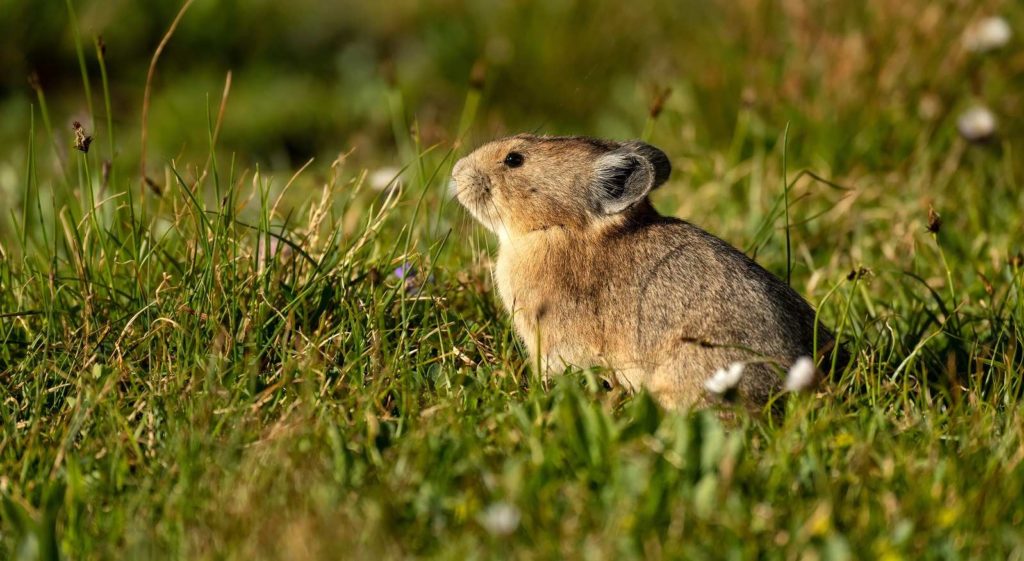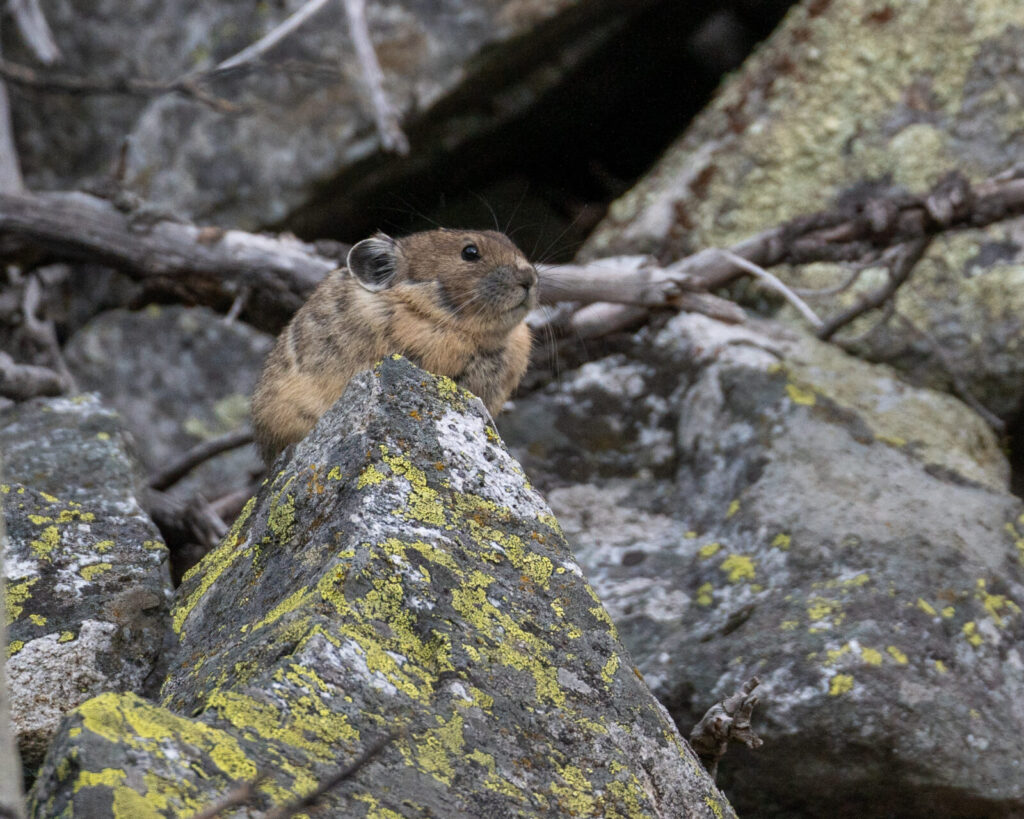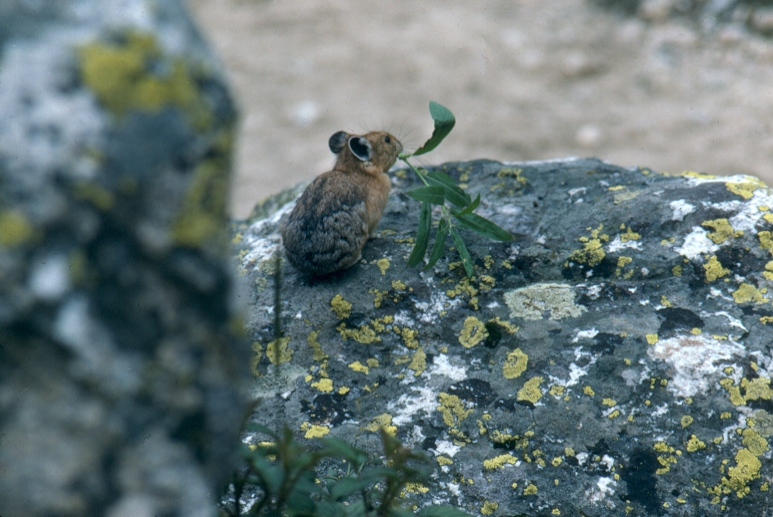MONITORING PIKAS IN A CHANGING ENVIRONMENT
American Pikas—small, rodent-like mammals that are most closely related to rabbits and hares—are declining nearly everywhere throughout the west, except in Grand Teton. Pikas live in the interstitial spaces of talus and boulder fields and can tolerate an uncommonly narrow ambient temperature range, which makes them very susceptible to the deleterious effects of changing weather patterns. Funding from GTNPF will help researchers conduct studies to better understand why the population of pikas in Grand Teton has not declined like populations that exist in nearby habitats. This will contribute to similar research being conducted throughout the west. It will help land and wildlife stewards better understand, predict, and, in some cases, mitigate the long-term effects of climate change on pikas and other wildlife populations.
